Bringing home a baby is a life-changer—for you and your dog.
One day they’re your only child, stealing socks and hogging the couch. The next? There’s a tiny, loud human in their territory. Confused? Jealous? Maybe a little heartbroken? Yep, your pup’s about to have feelings.
But don’t panic. With a little planning (and a lot of treats), you can help your dog feel calm, confident, and even kind of proud about their new role as big sibling.
These 14 tried-and-true tips will help you prepare your furry best friend for the biggest shift in the pack—your growing family.
Introduce Baby Sounds
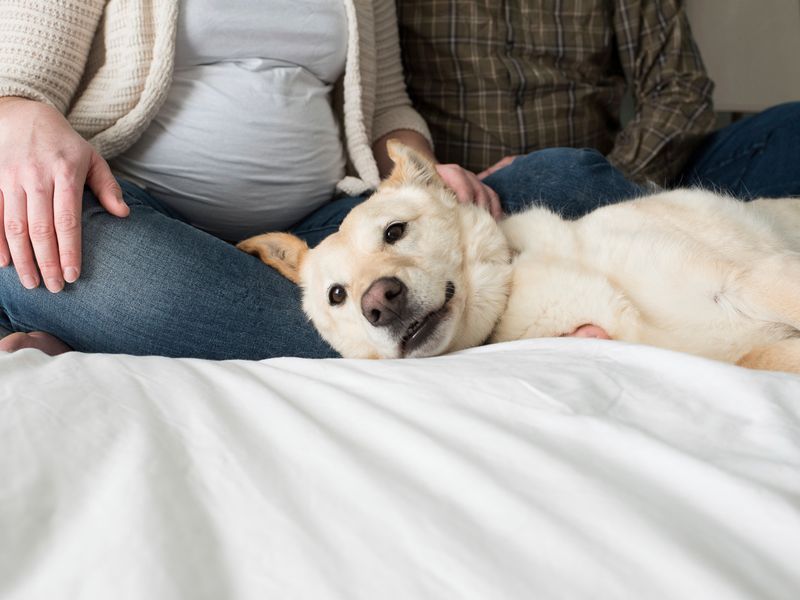
Dogs have sensitive hearing, and baby cries can be startling at first. Gradually introducing these sounds can be beneficial. Start by playing recordings of baby noises at a low volume.
As your dog becomes accustomed, slowly increase the volume. This familiarization helps reduce anxiety and prepares your dog for the real thing. It’s like a rehearsal for showtime!
Including your dog in these sessions with treats or playtime makes the experience positive and fun. Eventually, the once unfamiliar sounds become a normal part of their day.
Create a Safe Space
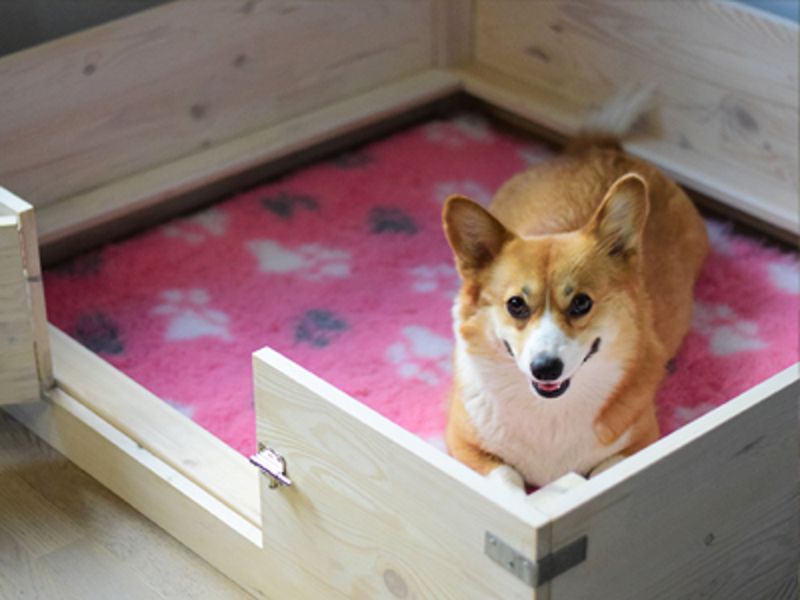
When the hustle and bustle of a new baby become overwhelming, having a designated safe space for your dog is crucial. This sanctuary should be cozy and away from the main traffic areas of the home. Stock it with their favorite toys and a comfortable bed.
It acts as a retreat where they can relax undisturbed. Think of it as your dog’s personal oasis. Regularly encourage your pet to use this space, ensuring they know it’s their special place to unwind.
Practice Basic Commands

Reinforcing basic commands is never wasteful. Commands like sit, stay, and come can be lifesavers when you need to manage your dog’s behavior with a newborn in the house.
Dedicate time each day to practice these commands, rewarding successful attempts. Consistency and patience are key. As your dog sharpens these skills, they gain confidence and security.
This mental workout also strengthens your bond. A well-trained dog can navigate the changes with ease, feeling included in the new family dynamic.
Introduce Baby Items
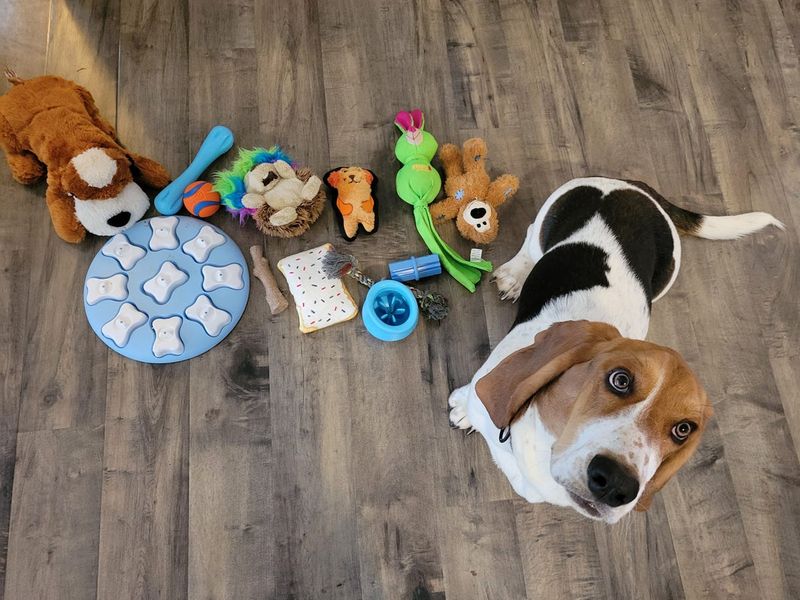
Familiarizing your dog with baby items can greatly reduce anxiety. Let them explore the nursery and sniff around the crib, stroller, and toys. This exploration helps them understand these objects are part of their new environment.
Encourage curiosity but set boundaries for off-limit areas. This practice also involves visual cues, helping your dog associate these sights with positive interactions.
Over time, they’ll accept these changes as part of everyday life, making the transition smoother for everyone involved.
Maintain a Routine
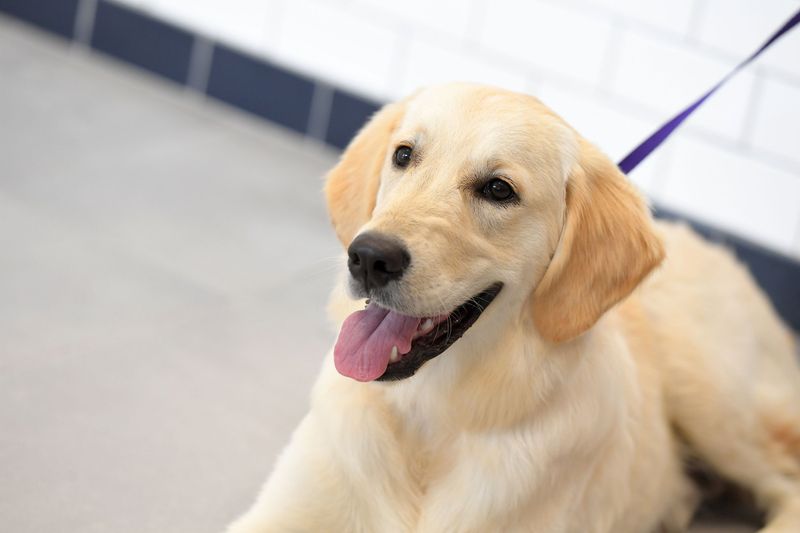
Dogs thrive on routine, so maintaining consistent schedules for feeding, walks, and playtime helps keep them grounded. Even with a newborn, it’s vital to stick to this routine as closely as possible.
Consistency provides comfort and security amidst the whirlwind of change. By ensuring your dog receives regular attention and engagement, you help them feel loved and involved.
This stability is a soothing balm, reassuring them that they’re an important part of your growing family.
Introduce Baby Scents
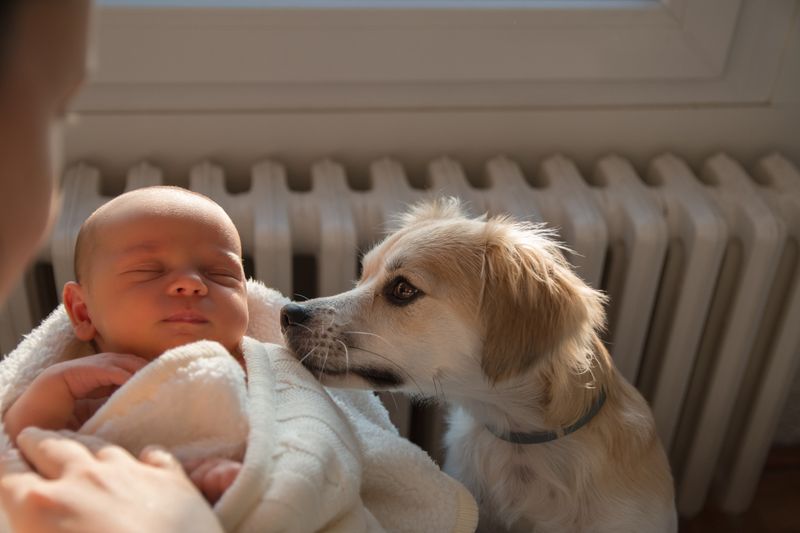
Before the baby arrives, exposing your dog to baby scents can be incredibly helpful. Use a blanket or clothing item with the baby’s smell and allow your dog to sniff it. This olfactory introduction helps your dog form positive associations with the baby’s scent.
Do this in a calm setting, offering treats to create a rewarding experience. As the baby’s scent becomes familiar, your dog will feel more comfortable when the baby comes home. It’s like a scent-based welcome party!
Establish Boundaries
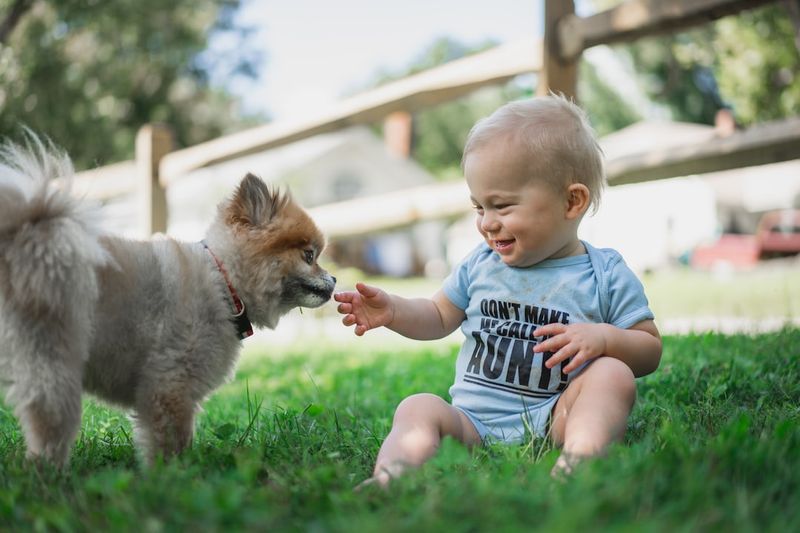
Setting clear boundaries before the baby arrives helps prevent confusion later. Use baby gates or closed doors to designate areas where your dog isn’t allowed to roam freely.
This training period establishes rules that promote harmony and safety for everyone. Encourage your dog to respect these boundaries with positive reinforcement, like treats or praise.
Over time, your pet will understand where they’re welcome and where they need to pause. This clarity fosters a peaceful coexistence.
Socialize with Children
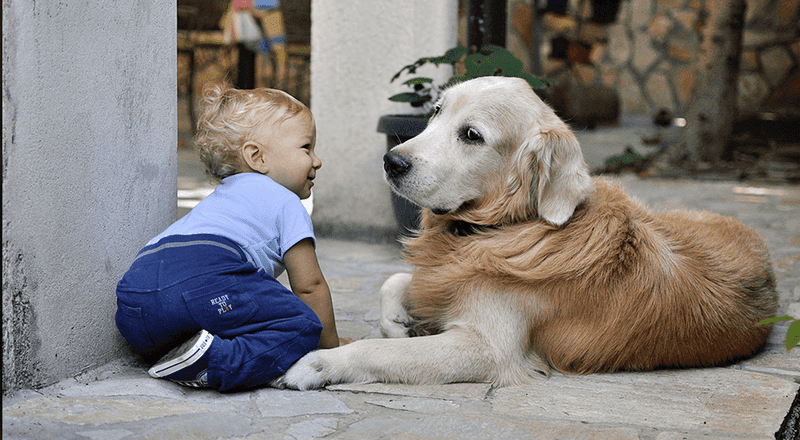
If your dog isn’t used to being around children, now’s the time to start. Arrange playdates or walks where they can interact with kids of different ages. This exposure helps them adjust to a child’s unpredictable movements and sounds.
Always supervise these encounters to ensure they’re positive experiences. Encouraging gentle interactions with kind words and treats builds trust.
Over time, your dog will learn that children are friendly and fun companions, easing the transition into your baby-friendly home.
Enroll in Training Classes

Signing up for a training class can be a rewarding experience for both you and your dog. Professional trainers offer valuable insights and techniques tailored to your pet’s needs.
These classes lay the groundwork for good behavior, especially in high-stress environments. They also provide a structured setting for your dog to learn new skills alongside other dogs.
This shared experience fosters a sense of community and achievement. As your dog progresses, you’ll both feel more prepared for the changes ahead.
Introduce New Walking Routes
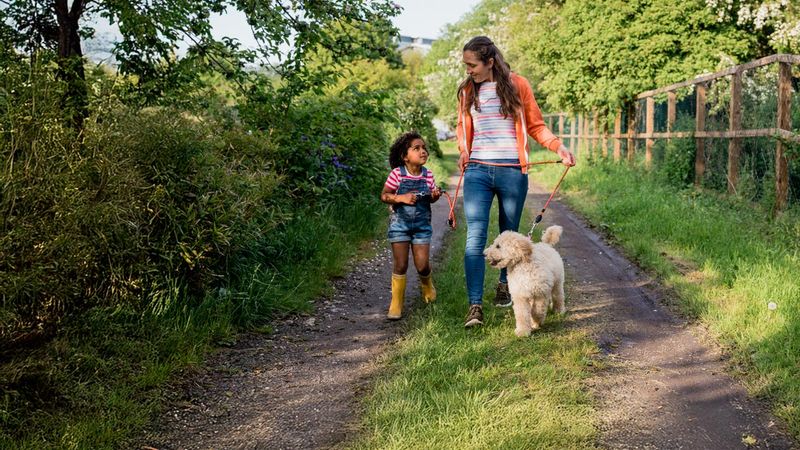
Exploring new walking paths together introduces your dog to varied sights, sounds, and smells. These adventures keep your pet mentally stimulated and physically active.
Try to incorporate routes that mimic the potential changes a baby may bring, such as busier paths or routes near parks with children. This exposure prepares your dog for the eventual outings with your new family member.
Each new route becomes an exciting journey, filled with discovery and bonding opportunities.
Provide Positive Reinforcement

Positive reinforcement is a powerful tool in preparing your dog for a new baby. Rewarding desired behavior with treats, affection, or playtime encourages your dog to repeat those actions.
Use this technique when introducing new routines, commands, or environments. This practice builds trust and confidence, making your dog feel safe and valued. As they adapt to changes, positive reinforcement reassures them they’re doing well.
It’s a loving way to guide them through this exciting transition.
Plan Quality Time
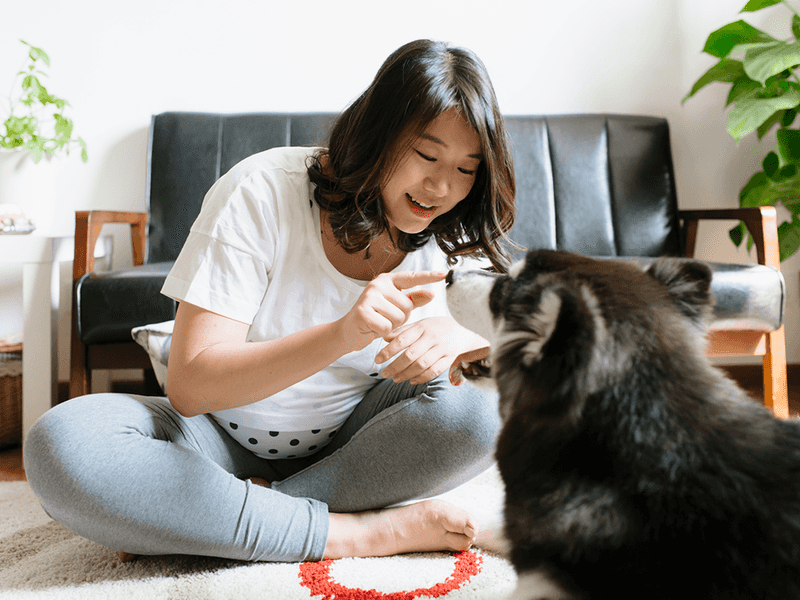
Amidst the excitement of a new baby, quality time with your dog should remain a priority. Schedule regular play sessions, walks, or cuddle time to reinforce your bond. These moments show your dog they’re still cherished and important.
It’s also a great stress-reliever for you! Engage in activities your dog loves, ensuring they feel included and valued. This attention helps reduce feelings of jealousy or neglect, promoting a harmonious blend of old and new family dynamics.
Monitor Health and Diet

A healthy dog is a happy dog, especially when a new baby is around. Regular veterinary check-ups ensure your pet is in top shape and ready for the changes ahead. Pay attention to their diet, providing nutritious meals that support their health.
A balanced diet aids in maintaining energy and a calm demeanor. Keeping your dog healthy minimizes stress and potential issues that could arise with a baby’s presence. It’s all about ensuring your furry friend feels their best.
Prepare for Changes in Attention
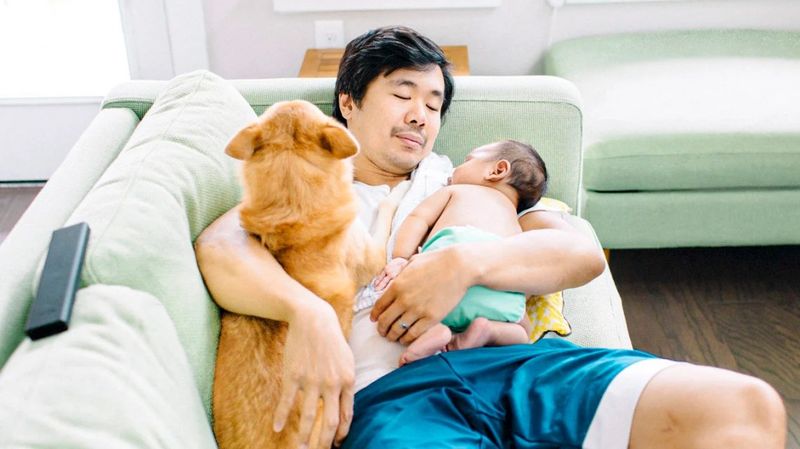
Changes in attention are inevitable when a new baby arrives. Gradually adapting your dog to these changes helps them adjust smoothly. Practice dividing your attention, gently encouraging independence.
This preparation reduces potential feelings of neglect. Engage your dog with interactive toys or puzzles to occupy them during busy times. Teaching them to enjoy alone time fosters resilience and adaptability.
This adjustment ensures your dog remains a content and integrated member of your growing family.

